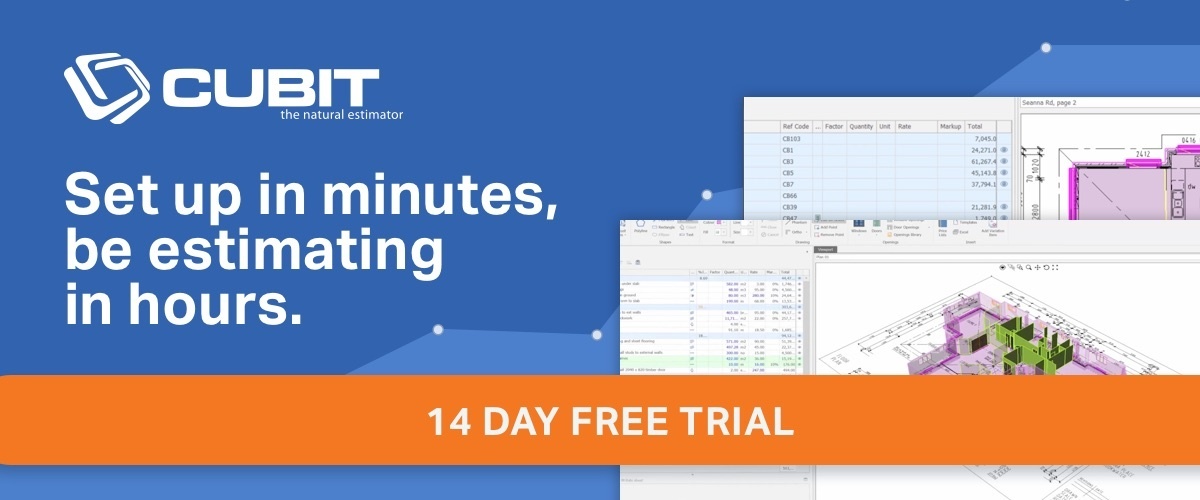Every year, engineers and builders look to develop innovative, energy-efficient, and cost-effective materials for their projects. Such a revolution is important because traditional building materials are becoming depleted or inefficient to meet current demand. For example, mining large quantities of iron ore just to extract metal is an environmentally unsustainable technique. With technology advancing performance in many different aspects of building and construction, the same technologies are being leveraged to explore and implement new building materials.
The good news is that construction companies can use innovative and environmentally friendly options to meet evolving customer demands. Over the past 10 years, builders and engineers have developed cooling bricks, translucent wood, and self-healing concrete to make their structures more energy-efficient and cost-effective.
2019 has also witnessed plenty of innovation in commercial material use. Here are some innovative material choices that are revolutionising the construction industry.
1. Concrete with reduced carbon concentration
Concrete is the most commonly used building material. Millions of kilograms of concrete are mined every year across the globe, releasing large amounts of carbon dioxide into the atmosphere. Carbon dioxide is a greenhouse gas that has been shown to contribute to global warming and climate change.
Engineers have now developed a concrete variant that emits lower amounts of CO2 into the atmosphere. By using an innovative chemical process, stronger bonds are formed between silica and calcium carbonate to release fewer CO2 particles. Carbon dioxide is essentially sequestered during the curing process, meaning that emissions can be reduced by as much as 30%.
This reduced concrete carbon can prove to be a game-changer in the upcoming years. With the prevalence of concrete as a primary building material, clients will be looking to reduce the carbon footprints of their commercial buildings by using innovative materials like this.
2. Cooling ceramics
Millions of dollars are spent every year in cooling Australia’s commercial buildings. Artificial cooling via AC systems is necessary to achieve proper climate control. However, this high dependency on costly AC systems is likely to change in the near future. Current research is being done to scale up the production of a clay composite building material that contains hydrogel. When things get hot, heat is absorbed by the clay composite and transferred to the hydrogel material. This gel will then evaporate and take away the heat with it, leaving a cooling effect in the building.
Research results show that clay composite with hydrogel could save up to 28% in artificial cooling costs. Indeed, by using a passive cooling mechanism in commercial structures, building owners stand to reduce their carbon footprints and operational expenses significantly.
3. Cabkoma rods
Cabkoma strand rods were developed in 2015 out of carbon fibre. Japanese engineers first developed these rods to make seismic retrofitting lighter, more convenient and more cost-effective for commercial applications.
Since their introduction, Cabkoma rods have evolved in size, installation, and application. They can now be used to add seismic support to many different types of structures while also infusing aesthetic appeal into the building’s inner and outer frame.
Furthermore, a single strand of cabkoma is 5 times lighter than a comparable metal rod. This means no costly excavations or drilling when installing the rods on site.
4. Inflated steel
As a mostly hollow material, steel can be modified in many different ways for construction purposes. The latest design features inflated steel that can be modelled into an actual stand-alone structure. One of these structures is present in Wroclaw, Poland, where a series of steel arches were inflated to create a vault-shaped dome that resembles a tunnel.
Steel sheets can also be fabricated and welded along strategic edges, after which the sheets are inflated with air to create a sturdy structure. Some of these shapes can withstand tones of weight and serve many different purposes in commercial construction.
5. Bioplastic furniture
As it currently stands, plastic is viewed as a rather troublesome material that’s difficult to dispose of or to recycle. Biological elements are being infused into plastic to make it more biodegradable and less toxic for many different applications. Bioplastic furniture is currently being produced on a small-scale basis. Such furniture requires lower amounts of energy and has the potential to reduce dependency on non-renewable energy sources.
6. Air filtering bricks
Pollution is a matter of concern to everyone in this day and age. Everyone wants to live and work in a safe environment where they don't breathe in toxins. Air filtering bricks can filter fine and coarse articles that before letting air into space. The pollutants drop into a hopper that can be emptied periodically. Constructing eco-friendly buildings with an inbuilt air filtration system is excellent for commercial buildings.
The materials above show how fast construction technology is changing towards being eco-friendly. You can utilise all the new materials with the assistance of a building software platform.
Construction software like Cubit can help you increase the accuracy of your cost and material estimates. With more accurate information, you’ll be able to produce better quotes for your clients, and offer a range of material options with the confidence of knowing their impact on your project’s bottom line.
Try it for yourself with a free trial, and see how better estimating can help you achieve your business goals.







